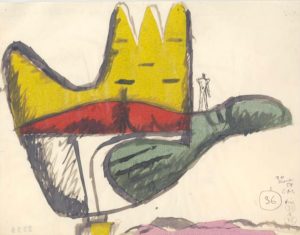We’re thinking of going to pick up a new desk tomorrow. One of those ones that incorporates the wall into its structure, and folds flat into the wall when it’s not in use.
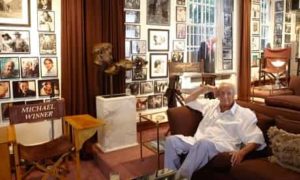
Sorry, Michael. I’m going somewhere with this.
[Find out if I’m bluffing below. But first, check out the Apoplexy Newsletter.]
The Piece, as I suppose you’re meant to call it, is clearly designed to be space-efficient and forward thinking. And I like that idea – the possibility that we could all have a smaller footprint, live more efficiently and mindfully, use up fewer resources, that sort of thing. It’s all very appealing to the guy who loves 100 Masterpieces from the Vitra Design Museum Collection.

Since I wrote that post, design-ery stuff hasn’t shown up much in the stories I write. Although the fact that the father in the throwaway piece I did for The Writers’ Cafe has a brushed stainless steel coffee maker seems to say something about him. I’m not sure it’s something good.
This week though, I’ve been researching Le Corbusier, the Swiss-French architect, designer, painter, urban planner, and writer – and pioneer of modern architecture – for a piece that’s a little more serious, and much more absurd.
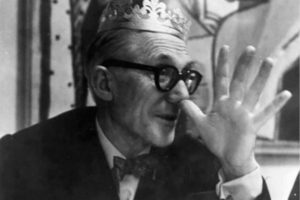
As I write this, I discover that in the BBC’s Sherlock, Holmes sits in a Le Corbusier LC-3, while Dr. Watson sits in a traditional Club chair. I guess that stainless steel coffee maker does say something, something ambivalent.
I have this much-treasured thought that chairs can tell a story of modern human thought. Certainly, Le Corbusier’s work was highly conceptual. When he took a dislike to the furniture on display at the 1925 Exposition of Decorative Arts, Ian Wiki describes Le Corbusier as following his usual method –
Le Corbusier first wrote a book with his theories of furniture, complete with memorable slogans.
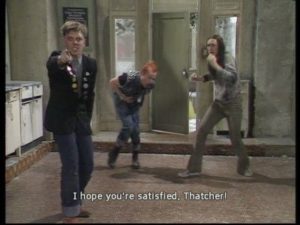
But, I recently heard a translator who had worked on architectural writings say
Architects think they’re great writers, but architectural writing is terrible – it’s obfuscatory.
And certainly, Le Corbusier’s texts are pretty forbidding. The three different furniture types are type-needs, type-furniture, and human-limb objects, indeed!
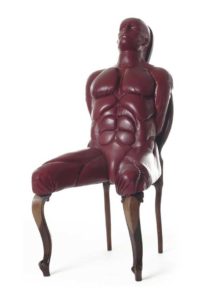
So for my bit (it’s more absurd than serious, really), I focused on the less conceptual details of Corbusier, and checked out this list of 14 Facts You Didn’t Know About Le Corbusier in Arch Daily. Like, he met Josephine Baker, the American entertainer, activist, and French Resistance agent (and exhibit in Washington DC’s disappointing International Spy Museum) on an ocean liner to Europe from South America and drew nude sketches of her.
He said, Chairs are architecture, sofas are bourgeois, which it pretty pithy. But notwithstanding that apparently revolutionary remark, Le Corbusier lectured on architecture in Mussolini’s Italy and held an urban planning position under the Vichy government to oversee designs for various cities, including Algiers. And when he got there, he had some pretty nasty things to say about the indigenous Algerians.

It’s just about enough to make a person reconsider their boycott of [name redacted] on the basis that things could be a lot worse. [Aside: no, it’s not.] So I spent time with just one more of the 14 facts, that seemed to come from a different place altogether. Le Corbusier was taken with the image of the Open Hand… He called it a ”sign of peace and of reconciliation meant to receive the created riches, and to distribute them to the peoples of the world. That should be the symbol of our epoch.”

Arch Daily linked to a cool interview with Le Corbusier discussing the 28-meter Open Hand sculpture in Chandigarh. By the time of this interview, Le Corbusier was long into his withdrawal from Politics (with a capital ‘P’). He finishes by summarising what the open hand means to him.
The hand is open, he says, to give and to receive. It’s a sign of optimism in this modern world of catastrophe. It’s mounted on a ball bearing, he says, to turn with the wind. Not aimlessly, but to express what life really is – constant changes.
Well, those seem like reflections for our times.
